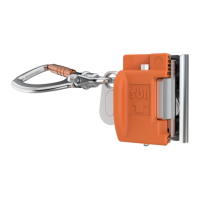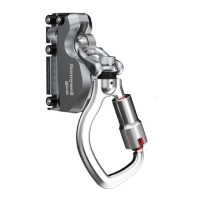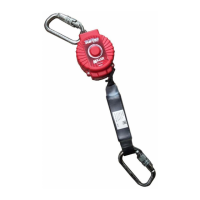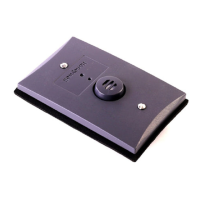Calibration Handbook
121Sensepoint Toxic
Sensepoint Toxic Calibration Procedure
The Sensepoint toxic sensor is supplied pre-calibrated, however, for increased accuracy in specific applications,
on-site system calibration is recommended.
CAUTION
Calibration should only be attempted after the sensor has been installed and power applied for a time exceeding
the stabilization time. In the first instance the initial calibration should be performed at the control card for the
sensor. If there is insufficient span or zero control at the control card, adjustments can be performed using
the potentiometers on the sensor.
1. Ensure that power is applied to the sensor and the sensor output is stable.
2. First ensure there is no target gas present, and zero the sensor at the control card. If the target or a cross
interfering gas is suspected to be in the vicinity of Sensepoint, it may be necessary to connect a cylinder
of zero gas to a Flow Housing and pass clean air across the sensor at 1 litre per minute to allow for a
stable zero to be achieved.
Main Sensor
Body
Sensor Cap
Internal
Hydrophobic Assembly
Filter
Housing/Retainer
RFI Screen/Metal Gauze
Electrochemical Cell
External
Hydrophobic Barrier
3. To set the sensor span, fit the Flow Housing and connect a gas cylinder of known concentration
(approximately 50% FSD in air) to the Flow Housing accessory using nylon or PTFE tubing.
Tubing lengths should be kept to a minimum to avoid reducing speed of response.
NOTE:
needed to obtain the necessary readings.
CAUTION
The test gas may be hazardous, it is important that the outlet of the Flow Housing is exhausted to a safe area.
4. Apply the gas at a flow rate of 1 liter per minute for the recommended application time (see Test Gas
Concentrations table below).
The flow rate for calibration in fast air flows must be adjusted as follows:
Wind Speed
(mph)
Measured Speed
Using Pitot (m/s)
Test Gas Flow Rate
(L/min) Series 2000
0 0.0 1.0
5 2.2 1.0
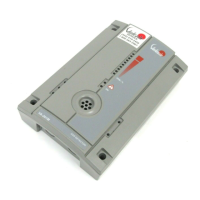
